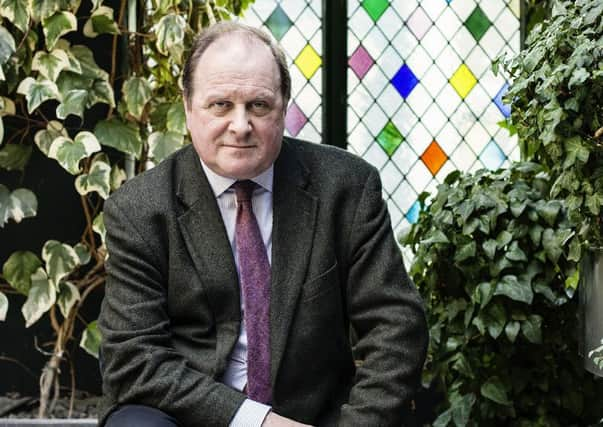James Naughtie's streets of rage


It should be no surprise he knows what he is about. The essential part of a novelist’s apprenticeship is reading the classic novels, and Naughtie is notably well-read.
It’s 1968, a turbulent year. There are violent protests against America’s Vietnam War. Behind the Iron Curtain, there is unrest in Czechoslovakia and Poland. In Paris students are rioting, and the unions are discontented. Dissatisfaction with the government of President de Gaulle, is rife.
Advertisement
Hide AdAdvertisement
Hide AdWill Flemyng, Scottish-American hero of Naughtie’s first novel, is a spook, working in the British Embassy. On the metro he is approached by a man whom he judges to be East German. It’s a pick-up. There will be another encounter, as he tells his superior and mentor, Freddy Craven. There is indeed. This time the man identifies himself only as Kristof, and hints that Will’s brother Abel may be in trouble. Abel has taken the family name of their American mother, and works for what one assumes to be the CIA. This is the kick-off for a beautifully-plotted spy story, as convincing as any of John Le Carré’s.
Then a celebrated and glamourous American globe-trotting journalist – think of Martha Gellhorn – is found dead in the Père Lachaise cemetery. She has been in pursuit of a big story, and may, it seems, have been playing on both sides of the Curtain. That’s the set-up, and it would be wrong for a reviewer to say more about the development of the plot, except to observe that it requires, and deserves, the reader’s close attention, as it plays out in the feverish atmosphere in the streets of Paris.
Naughtie knows the importance of modulating the pace of his narrative and supplying background. There are scenes set in Perthshire on the Flemyng estate, Altnabuie, when Freddy Craven, anxious about Will, visits the oldest brother, Mungo, a historian. Naughtie has learned from John Buchan – surely one of the influences on his work – that it is important to pause in his narrative and to supply his characters with a background or hinterland. Altnabuie is what Buchan would have called “the Good Place” where things fall into perspective.
Setting is essential to any novel of adventure, and this one is enriched by Naughtie’s knowledge of Paris and his ability to evoke the feel and atmosphere of the city. If you know Paris, you will delight in following Will’s movements about the city. If you don’t, then I suggest that your enjoyment of the novel will be enhanced if you read it with a street-map of Paris to hand. It can indeed also be read as a love-letter addressed to Paris.
Advertisement
Hide AdAdvertisement
Hide AdOne of its many merits is its awareness that, even as the students are confronting and fighting with the riot police on the Left Bank, life in other parts of the city goes on as normal. Restaurants are still open, head-waiters are still deferential to their regular customers, and in the prosperous bourgeois districts people still hold dinner-parties. But there are also seedy bars and cafes where Will and Kristof probe each other’s defences.
The novel is slow-paced, and this is as it should be. It’s a time when everyone’s nerves are on edge, when the career diplomats in the Embassy are uncertain and afraid they may be caught up in a scandal. Naughtie knows the official mind, and how anxious men in authority are to preserve appearances. This knowledge is unusual.
Most writers of thrillers engage in guesswork, but Naughtie moves along the corridors of officialdom with the assurance that CP Snow used to display. The characters are imaginary, but the picture, at this time of international tension, rings absolutely true. Naughtie gives us 1968 as it was. Where will he take Will Flemyng next?